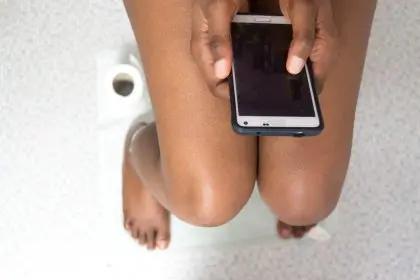Your body might be desperately signaling for hydration in ways you’ve never imagined. Health experts reveal the hidden indicators that could mean you’re running on empty.
The dehydration dilemma
Most people recognize the classic signs of dehydration: thirst, dry mouth, and dark urine. However, your body has numerous other ways of signaling its need for water that frequently fly under the radar. Dehydration occurs when your body loses more fluids than it takes in, disrupting the normal function of bodily systems. While commonly associated with intense physical activity or hot weather, dehydration can happen to anyone, anywhere, regardless of activity level or climate.
The human body consists of approximately 60% water, with this life-sustaining fluid playing crucial roles in nearly every bodily function—from regulating temperature and delivering nutrients to removing waste and cushioning joints. Even mild dehydration, defined as losing just 1-2% of your body’s water content, can significantly impact your physical and cognitive performance.
What makes dehydration particularly troublesome is how its subtle symptoms are often attributed to other conditions, leaving the true cause unaddressed. Recognizing these lesser-known indicators can help you maintain proper hydration and prevent potentially serious health complications. Here are seven surprising symptoms that might indicate your body is craving water.
1. Persistent bad breath that won’t go away
The first overlooked sign of dehydration is persistent bad breath. When you’re properly hydrated, your body produces sufficient saliva, which contains antibacterial properties that naturally cleanse your mouth. However, dehydration reduces saliva production, creating an environment where bacteria thrive.
This bacterial overgrowth leads to bad breath that brushing and mouthwash might temporarily mask but won’t resolve until the underlying dehydration is addressed. Additionally, reduced saliva can contribute to accelerated plaque formation and increased risk of cavities and gum disease.
To determine if dehydration might be causing your bad breath, check whether your mouth consistently feels dry or sticky, particularly if you notice a persistent unpleasant taste. Unlike morning breath or food-related odors, dehydration-induced bad breath tends to persist throughout the day.
2. Unusual food cravings, especially for sweets
When dehydration sets in, your body may struggle to produce glycogen, the form in which your body stores glucose for energy. This can trigger intense cravings, particularly for sweet or salty foods, as your body misinterprets thirst as hunger while simultaneously seeking quick energy sources or electrolytes.
These dehydration-induced cravings often focus specifically on sweet foods because your body is searching for the quickest route to energy restoration. Salt cravings might indicate an electrolyte imbalance that commonly accompanies dehydration.
Many people mistakenly respond to these signals by eating rather than drinking, which can lead to unnecessary calorie consumption while failing to address the actual problem. Next time an unexpected craving strikes, try drinking a glass of water and waiting 20 minutes to see if the urge subsides.
3. Muscle cramping in unusual situations
The third unexpected dehydration symptom involves muscle cramping that occurs in situations where you wouldn’t typically expect it. While many associate muscle cramps with intense exercise, dehydration can cause painful muscle contractions even during light activity or while at rest.
Proper muscle function depends on adequate hydration and a balance of electrolytes including sodium, potassium, calcium, and magnesium. When dehydrated, this delicate balance is disrupted, causing muscles to contract involuntarily and painfully.
What distinguishes dehydration-related cramping is its tendency to occur without obvious triggers like strenuous activity. You might experience these cramps while sitting at your desk, walking short distances, or even during sleep. Recurring muscle cramps, particularly in the legs, feet, or hands during normal daily activities, could indicate your hydration needs attention.
4. Decreased cognitive function and brain fog
Perhaps the most concerning yet frequently overlooked symptoms of dehydration involve cognitive function. Your brain is approximately 75% water, making it particularly vulnerable to fluid deficiencies. Even mild dehydration can impair various aspects of brain function, including concentration, memory, and mood.
This manifestation of dehydration often presents as unexplained brain fog, difficulty focusing, or unusual forgetfulness. Tasks that normally come easily might suddenly require more effort, and you may find yourself making uncharacteristic mistakes or struggling to find words.
Research has demonstrated that fluid loss of just 1-2% can reduce cognitive performance in tasks requiring attention, immediate memory, and physical abilities. More concerning is how frequently these symptoms are attributed to stress, lack of sleep, or general fatigue, while the simple solution—adequate hydration—remains overlooked.
5. Unexpected skin changes beyond dryness
While dry skin is commonly associated with dehydration, subtler skin changes often go unrecognized as hydration indicators. Dehydrated skin can appear dull and uneven, with enhanced fine lines and increased sensitivity, even if it doesn’t feel particularly dry to the touch.
A reliable test for skin dehydration is the “pinch test”: gently pinch the skin on the back of your hand, then release. Hydrated skin springs back immediately, while dehydrated skin returns to normal more slowly. Persistent skin issues that don’t respond to topical treatments might actually stem from insufficient internal hydration.
Dehydration can also exacerbate existing skin conditions such as eczema, psoriasis, and acne. If you notice your skin behaving differently despite maintaining your usual skincare routine, increasing your water intake might provide surprising benefits.
6. Chronic joint pain without injury
The sixth little-known dehydration symptom involves your joints. Water makes up a significant portion of the cartilage that cushions your joints and allows for smooth, pain-free movement. When dehydration occurs, this cushioning effect diminishes, potentially leading to increased friction and discomfort.
Joint pain resulting from dehydration typically presents differently from injury-related pain. Rather than being localized to a specific joint that experienced trauma, dehydration often causes generalized discomfort across multiple joints. You might notice increased stiffness, particularly in the morning or after periods of inactivity.
What makes this symptom particularly deceptive is how easily it’s attributed to aging, weather changes, or minor strain. People often reach for pain relievers when simply increasing fluid intake might alleviate the underlying cause.
7. Unexplained headaches that don’t respond to pain relievers
The final overlooked dehydration symptom is perhaps the most common yet frequently misattributed: headaches that develop without obvious cause and prove resistant to standard pain relief measures.
Dehydration reduces blood volume, which in turn decreases oxygen flow to the brain and causes blood vessels to dilate, resulting in headaches. These headaches typically present differently from other types—they often affect the entire head rather than just one region and may worsen with movement or position changes.
A distinguishing feature of dehydration headaches is their responsiveness to fluid intake. While medication might provide temporary relief, symptoms often return until proper hydration is restored. If you’re experiencing recurring headaches without obvious triggers, tracking your water intake might reveal an unexpected connection.
Prevention better than cure
Addressing dehydration requires more than simply waiting until symptoms appear. By the time your body displays these subtle signals, you’re already experiencing the negative effects of insufficient hydration. Preventive strategies include:
Establishing consistent drinking habits throughout the day rather than consuming large amounts infrequently. Keeping a reusable water bottle visible as a constant reminder, and perhaps marking time goals on it to pace your intake.
Monitoring urine color remains one of the most reliable indicators of hydration status, with pale straw-colored urine generally indicating adequate hydration. Remember that certain medications, supplements, and foods can alter urine color, so consider this one indicator among many.
Incorporating water-rich foods such as cucumbers, watermelon, oranges, and celery can significantly contribute to your overall fluid intake while providing valuable nutrients and electrolytes.
Ultimately, recognizing these subtle dehydration symptoms provides an opportunity to address an easily correctable problem before it impacts your health and quality of life. By maintaining proper hydration, you’re not just preventing these uncomfortable symptoms—you’re optimizing your body’s functioning across all systems.














